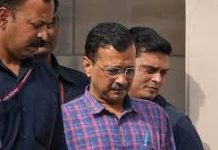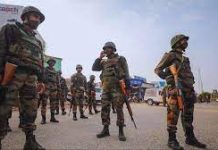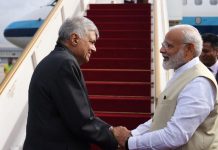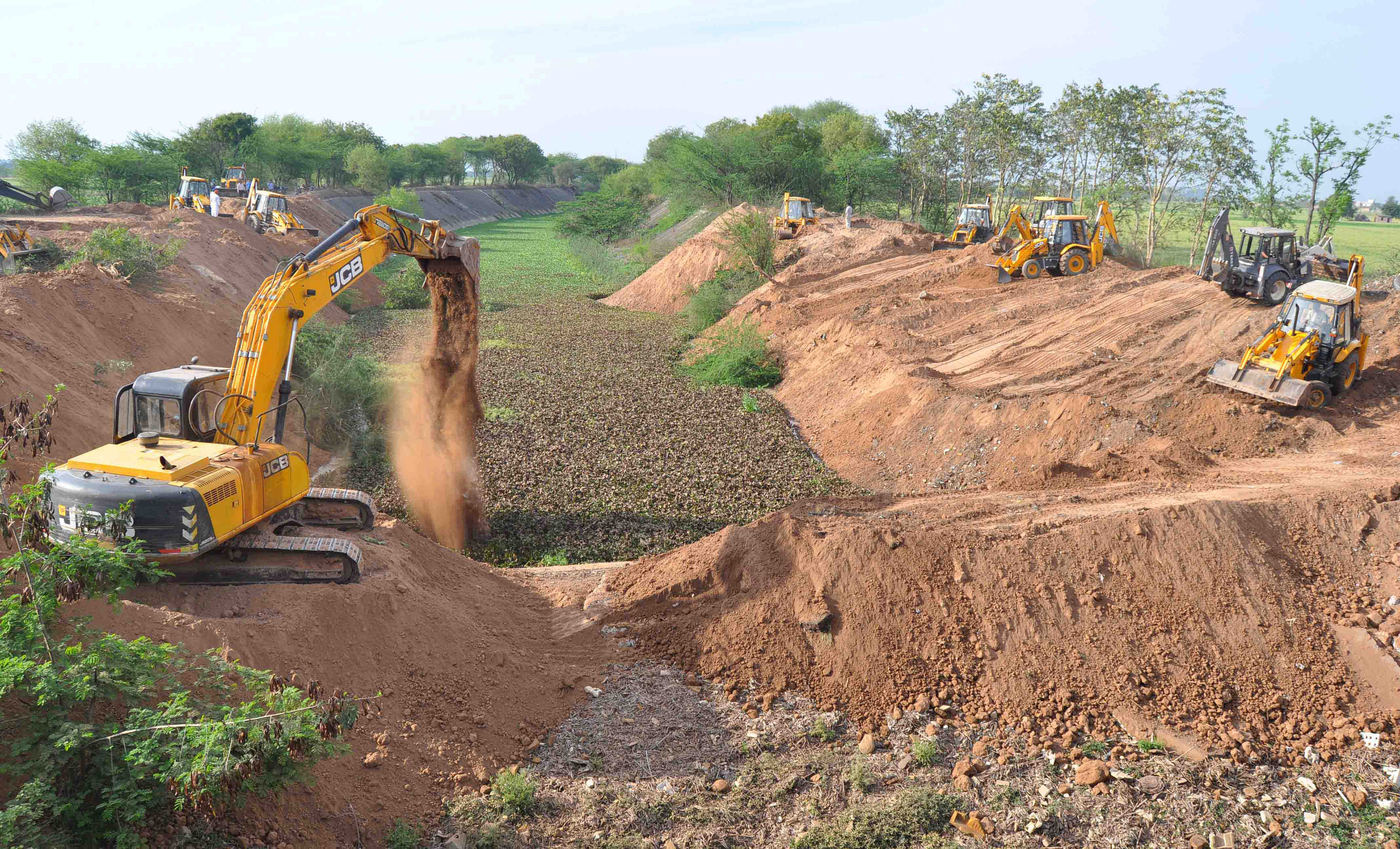
With Punjab and Haryana once again sticking to their stand on the vexed issue of now-defunct Sutlej-Yamuna Link canal – through which the water of Ravi and Beas rivers was to be shared between the two states – the stalemate over the issue has deepened,, writes Rajesh Moudgil
The recent meeting chaired by Union Jal Shakti minister Gajendra Singh Shekhawat with the chief ministers of Punjab and Haryana – third meeting since the Aam Aadmi Party (AAP) formed its government in Punjab last year – on the 26-year old vexed issue of SYL, fell flat, once again.
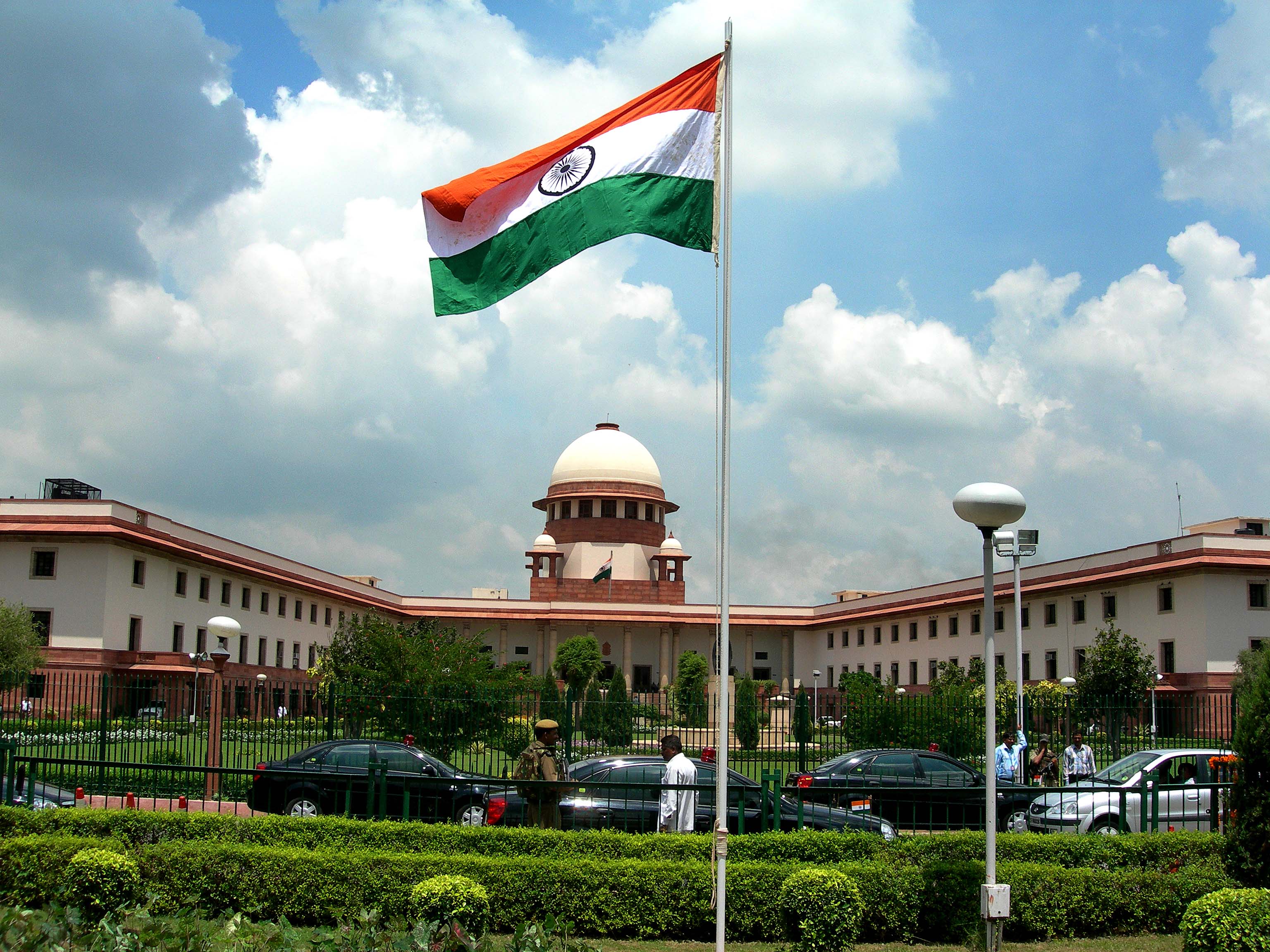
While the riparian state Punjab chief minister Bhagwant Mann held that the state did not have even a single drop of spare water, his Haryana counterpart Manohar Lal Khattar held that getting water through the said canal was Haryana’s right. He rued Punjab’s refusal to accept the directions of the Supreme Court of India which had come in Hayana’s favour.
However, Mann maintained that more than 78% of our 150 blocks were in extreme dark-zone due to depletion of ground water-table in Punjab over the years, therefore the state could not afford to share its water with any other state.
Elaborating upon state’s latest statistics, he further held that when the agreement on water sharing between the two states was signed decades ago, Punjab was getting 18.56 million acre feet (MAF) while Punjab now got 12.63 MAF, and Haryana was getting 14.10 MAF water from Sutlej, Yamuna and other rivulets.
Khattar, on the other hand, pointed out that Mann was avoiding to discuss the key issue – SYL canal – and was instead bringing up the issue of water sharing for which a separate tribunal had been set up upon recommendations of which, the water sharing would be done He further complained that Punjab was not accepting the SC’s decision which was in favour of Haryana.
No SYL, talk about YSL: Mann
Bringing up a new standpoint, Mann, this time, fought for changing the nomenclature and proposal of the project. He held that instead of the SYL canal, the project should now be conceived as Yamuna-Satluj-Link (YSL) canal.
Stating that Satluj river had already dried up, hence no question of sharing even a single drop of water from it, he said that rather, the water from Ganga and Yamuna should be supplied to Punjab through Satluj river.
Stating that the state had a centuries old canal system due to which even the districts at the center of the state fell on the tail end of canal water, Mann bemoaned that the Union government had not given even a penny for the rejuvenation of the canal system, due to which farmers were suffering. He said that there were 14 lakh tube wells in the state which were pumping water regularly to fulfill the irrigation needs of the state and make the country self-sufficient in food production.
He also pointed out that due to availability of surplus water, Haryana was encouraging the sowing of paddy, while Punjab had been appealing to the farmers to adopt less water-guzzling crops. Moreover, in all the water agreements across the globe, a clause was mentioned that the agreement would be reviewed after 25 years in wake of climate changes, he further held.
SYL is Haryana’s right: Khattar
Haryana chief minister Khattar, however, held that in spite of two Supreme Court judgments in favour of Haryana, Punjab had not completed the construction of SYL canal and instead, had tried to obstruct their implementation by enacting the Cancellation of Agreements Act in 2004.
Referring to the provision of Punjab Reorganization Act, 1966, he said that according to the order of the Government of India dated March 24, 1976, 3.5 MAF of water was allocated to Haryana out of the surplus water of Ravi-Beas. However, due to non-completion of SYL canal, Haryana was using only 1.62 MAF of water and Punjab was illegally using about 1.9 MAF of water from Haryana’s share.
Khattar added that it was due to this, Haryana had not been able to take its 1.88 MAF share of water while Punjab and Rajasthan were using about 2600 cusecs of water from Haryana every year.
If this water had reached Haryana, it would have been used to irrigate 10.08 lakh acres of land, Khattar said adding that due to non-availability of this water, the groundwater level in South-Haryana was also going down considerably and farmers of Haryana irrigated by using expensive diesel and running tubewells with electricity, which incurred an additional burden of Rs 100 crore to Rs 150 crore.
Political overtones
The Punjab chief minister further took on the then Congress and Shiromani Akali Dal governments, accusing them of conniving with each other to hatch conspiracy against the state in the context. He went on to allege that the scion of Patiala royal family and former chief minister, Capt Amarinder Singh, who was Member of Parliament at that time, had also welcomed the then prime minister for ground breaking of this. Mann took a dig at the two parties saying that it was ironic that those people who had hailed this decision were now offering unsolicited advice to him.
SYL Stalemate Timeline
Haryana was carved out of Punjab in 1966 and the said water-sharing agreement was inked in 1981 for the effective distribution of water according to which a 211-km long SYL canal was to be constructed by Punjab (121 km) and Haryana (90 km) in their respective territories.
Subsequently, while Haryana constructed its portion around June 1980, Punjab suspended the SYL canal work, leading to multiple cases and agitations.
The Supreme Court in a decree issued in 2002 ruled in favour of Haryana and directed Punjab to construct the SYL canal within a year. This decree came on a suit filed by Haryana in the year 1996.
In June 2004, the SC reiterated its earlier decision while dismissing a suit filed by Punjab seeking discharge from its obligation to construct the SYL Canal. However, in 2004 only, the Punjab assembly passed a law by which it cancelled the agreement with Haryana over SYL. This law went to the SC by way of a Presidential reference and got decided in November 2016.
Holding the Act as unconstitutional, it said that a state, which is a party to the litigation or an agreement, could not unilaterally terminate the agreement or nullify the decree of the highest court of the country. In July 2019, the SC while dealing with the 1996 suit filed by Haryana against Punjab noted with anguish that its January 2002 decree remained unexecuted till date and that while the court had been passing several orders since 2017 (after the Presidential reference judgment) to work out some amicable settlement between the states, the same had failed to yield any results.


